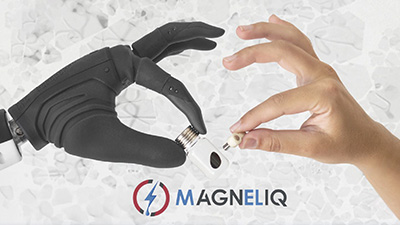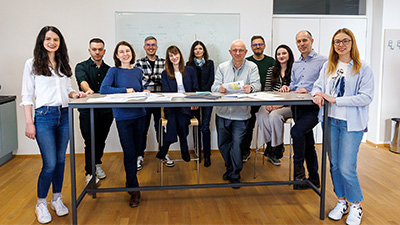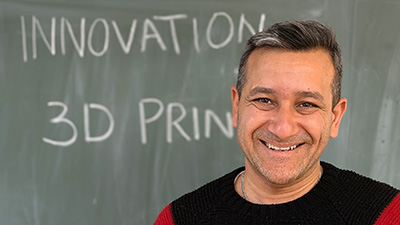On April 10th, 2025, we hosted the MAGNELIQ Symposium as part of the MAGNELIQ project, "A MAGNETO-ELECTRIC LIQUID – TO SENSE BETTER". The project is coordinated by Prof. Dr. Darja Lisjak and carried out by the Department of Materials Synthesis and Complex Matter in collaboration with partners from the Institute of Physics of the Czech Academy of Sciences (Czech Republic), CNR-IOM (Italy), the University of Maribor, Faculty of Electrical Engineering, Computer Science and Informatics (Slovenia), and the high-tech SME Prensilia SRL (Italy). The first part of the symposium, dedicated to the scientific community, featured presentations of key project results—most notably the development of novel soft magneto-electric materials, supported by theoretical modeling. In the second, application-oriented session, we demonstrated how these materials have been translated into advanced contactless sensor technologies, including a miniature magneto-optic angular position sensor and a force sensor designed for use in supportive medical robotics. These innovations represent a significant step toward the integration of smart materials into next-generation sensing systems, with promising potential for both scientific and industrial impact. |
In cooperation between SRIP ToP, coordinated by the Center RIP at JSI and SBRA, an event entitled Smart Factories of Tomorrow: Transitioning to Industry 4.0/5.0 was organised in the former premises of the University of Brussels, where Albert Einstein and Marie Skłodowska Curie were also present in the past. The SRIP ToP was first presented to the large audience from various European institutions, companies and associations, followed by presentations on robotics (Assoc. Prof. Dr Igor Kovač - IJS), control technologies (Dr. Miha Glavan - IJS), modern production methods for materials and nano- and quantum technologies (Prof. Dr Matjaž Spreitzer - IJS), photonics (Prof. Dr Rok Petkovšek - ULFS), plasma technologies (Prof. Dr Ita Junkar - IJS), smart factories (Prof. Dr Niko Herakovič - ULFS) and smart mechatronic tools (Dr Aleš Hančič - Tecos). The entire programme was enriched by presentations from leading representatives of the following organisations: EIT Manufacturing; European Commission, DG Research and Innovation, Industry 5.0 and AI in Science Unit; European Factories of the Future Research Association EFFRA; Flanders Make - Smart Factory Benelux. |
AutoLearn-SI is a €2.5M #HorizonEU-funded project at Jožef Stefan Institute, establishing a top-tier ERA Chair research group to advance automated machine learning and optimization (AutoML and AutoOPT). It integrates cutting-edge AutoML/AutoOPT into research and education, supporting national reforms and boosting EU funding potential. The project is built on three core vertical pillars - Experimental Databases, Representation Learning, and Automated Algorithm Selection/Configuration - alongside two horizontal pillars: Single-objective Optimization (SOO) and Multi-label Classification (MLC). Led by a USA-based ERA Chair Holder, AutoLearn-SI fosters international collaboration with partners from France, Germany, the Netherlands, and Belgium while enabling knowledge transfer to North Macedonia and other widening countries. By strengthening research capacity and stakeholder engagement within the European Research Area, the project drives innovation, enhances Slovenia’s leadership in automated machine learning and optimization, and contributes to regional excellence in AI-driven decision-making. |
In partnership with the Faculty of Engineering, University of Ljubljana, Department of Nanostructured Materials wes awarded the third Rector's Award for the patent as a final result of the EIT Manufacturing project aProMag. The main objective of the project was to prototype, validate and bring to market a technology for rapid prototyping of rotors for brushless DC motors and actuators using 3D printing in a magnetic field that enables anisotropic alignment of hard magnetic material. The advanced technology reduces waste through 3D printing technology, with very low waste and material used reusable up to 5 times (~97% material yield). Advanced technology reduces waste through 3D printing technology. The source of feedstock powder is raw material recovered from end-of-life NdFeB magnets, enabling a circular economy. The technology also significantly reduces the time to produce end products to test design concepts by up to 5 times and significantly reduces the cost of conventional injection moulding tooling. The end user to test the new methods is Kolektor, a world-renowned manufacturer in the field. The technology is patented. |



